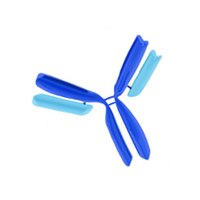411483 Sigma-AldrichMouse Anti-Human IgG₃, Hinge Specific (HP6047) Biotin Conjugate
This Mouse Anti-Human IgG₃, Hinge Specific (HP6047) Biotin Conjugate is validated for use in ELISA for the detection of Human IgG₃, Hinge Specific.
More>> This Mouse Anti-Human IgG₃, Hinge Specific (HP6047) Biotin Conjugate is validated for use in ELISA for the detection of Human IgG₃, Hinge Specific. Less<<Recommended Products
Overview
| Replacement Information |
|---|
Products
| Catalogue Number | Packaging | Qty/Pack | |
|---|---|---|---|
| 411483-200UG | Plastic ampoule | 200 μg |
| Description | |
|---|---|
| Catalogue Number | 411483 |
| Brand Family | Calbiochem® |
| Product Information | |
|---|---|
| Form | Liquid |
| Formulation | In PBS, 1% BSA, pH 7.4. |
| Preservative | None |
| Quality Level | MQ100 |
| Biological Information | |
|---|---|
| Immunogen | Human |
| Clone | HP6047 |
| Host | Mouse |
| Isotype | IgG₃ |
| Antibody Type | Monoclonal Antibody |
| Concentration Label | Please refer to vial label for lot-specific concentration |
| Physicochemical Information |
|---|
| Dimensions |
|---|
| Materials Information |
|---|
| Toxicological Information |
|---|
| Safety Information according to GHS |
|---|
| Safety Information |
|---|
| Product Usage Statements |
|---|
| Packaging Information |
|---|
| Transport Information |
|---|
| Supplemental Information |
|---|
| Specifications |
|---|
| Global Trade Item Number | |
|---|---|
| Catalogue Number | GTIN |
| 411483-200UG | 04055977211245 |
Documentation
Mouse Anti-Human IgG₃, Hinge Specific (HP6047) Biotin Conjugate SDS
| Title |
|---|
Mouse Anti-Human IgG₃, Hinge Specific (HP6047) Biotin Conjugate Certificates of Analysis
| Title | Lot Number |
|---|---|
| 411483 |
References
| Reference overview |
|---|
| Hamilton, R.G. 1990. Ann. Biol. Clin. 48, 473. Fasullo, F.J., et al. 1989. Clin. Chem. 35, 364. Hamilton, R.G. 1987. Clin. Chem. 33, 1707. Jefferis, R., et al. 1986. Immunol. Letters 10, 223. |














